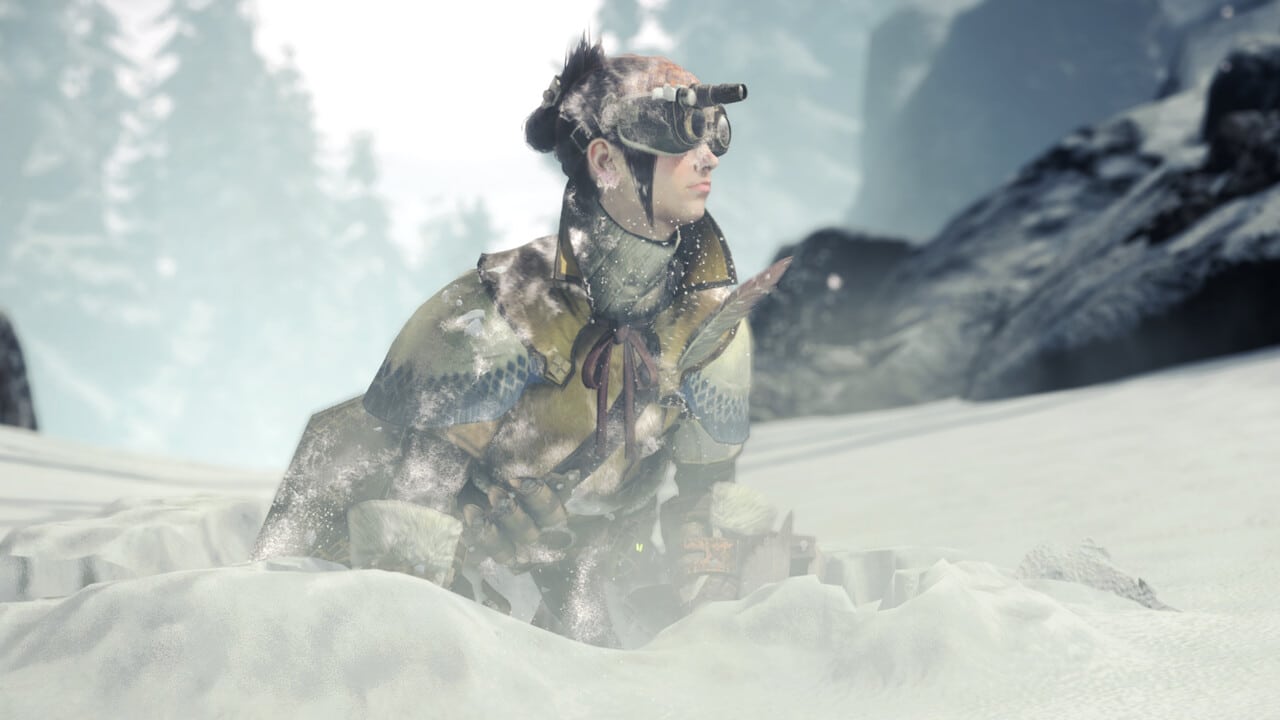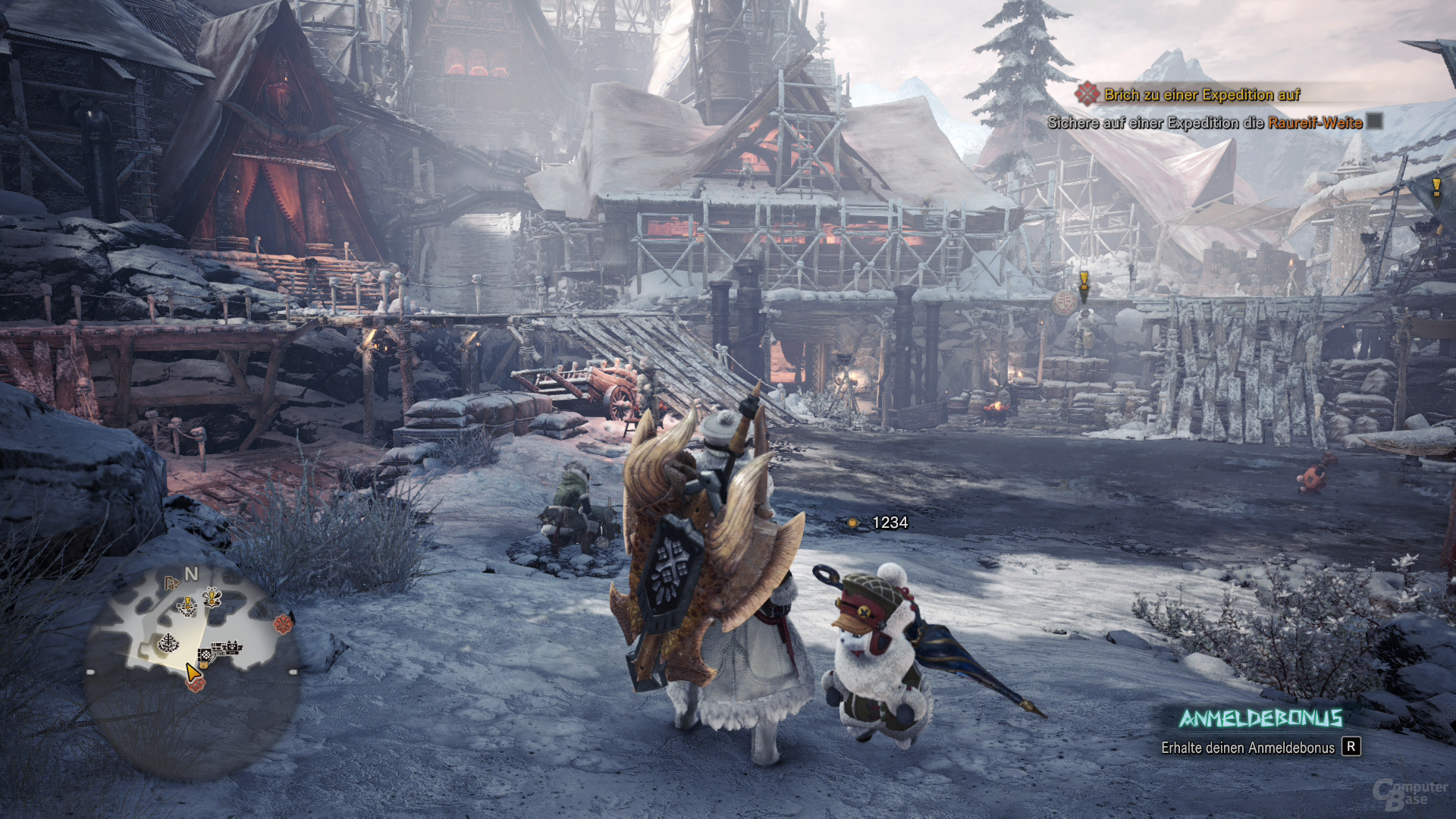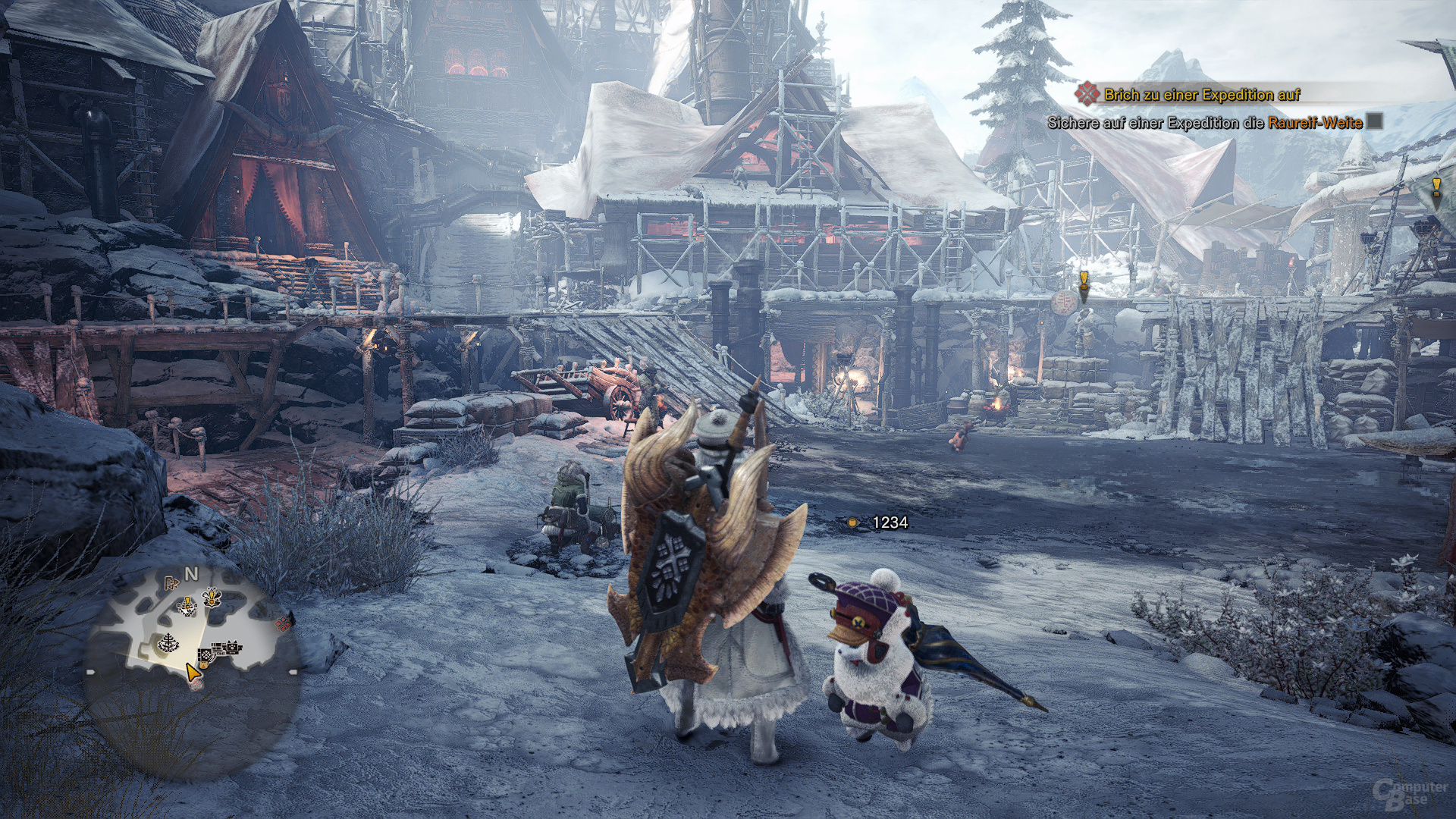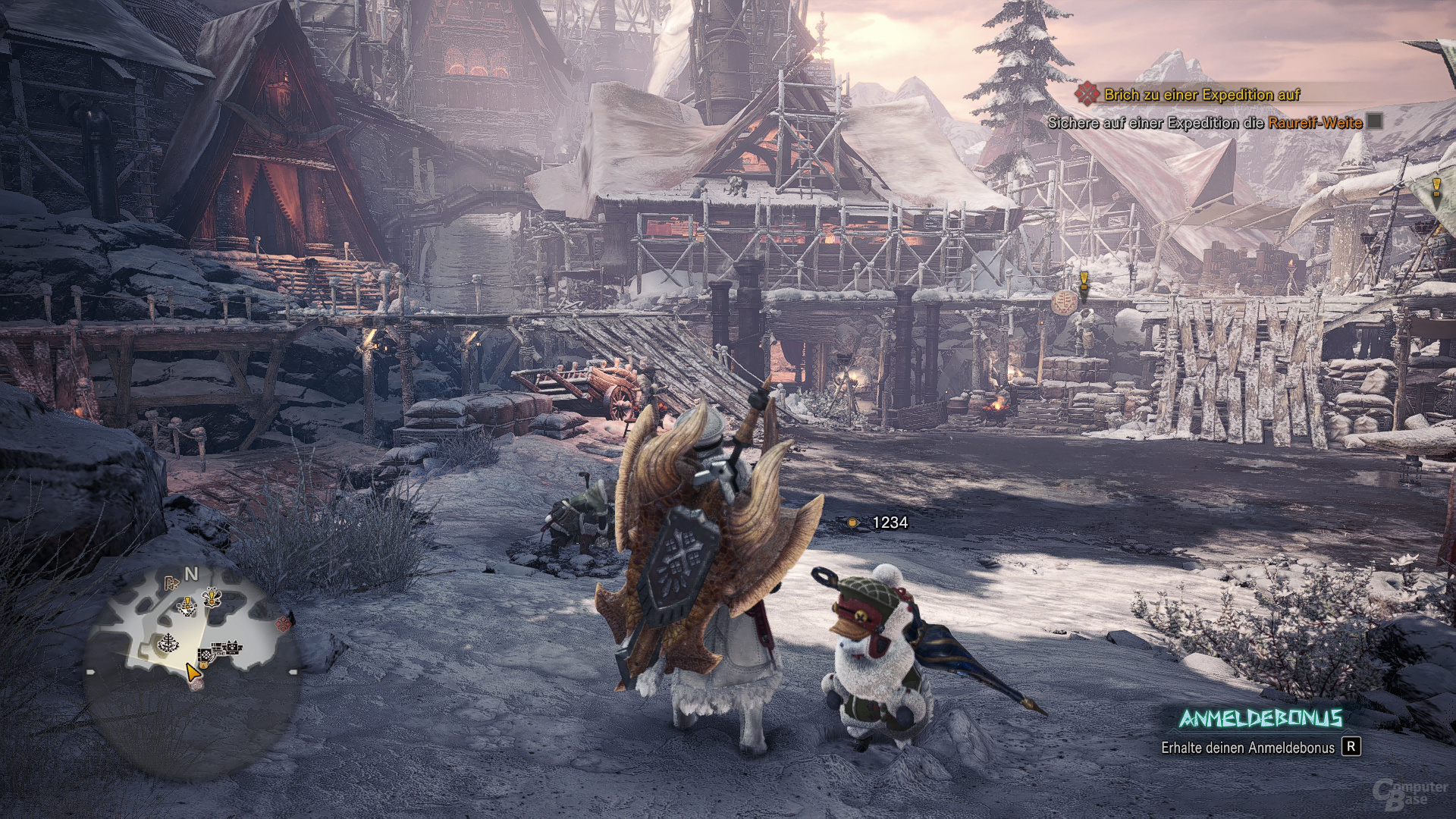– Monster Hunter World now supports DirectX 12 and AMD FidelityFX – and not just with the DLC Iceborne. Reason enough to put the technology to a new test. The focus is on graphics card benchmarks and the comparison DirectX 11 vs. DirectX 12. A fast CPU is still required.
With numerous patches, Capcopm has gradually improved the somewhat bumpy PC version of Monster Hunter World (test) in autumn 2018. This is also reflected in the number of players, which according to Steam are at a high and stable level. With Iceborne, the game has now received its first major DLC, which extends the game – also with technical functions.
Monster Hunter World: Iceborne with DirectX 12 and FidelityFX
Monster Hunter World: Iceborne naturally uses the same framework as the main program. However, there have been new graphics sets for the new environments, for example, so there is now a lot of ice and snow to see. But the pictures of the in-house MT framework engine do not make it more beautiful. Monster Hunter World: Iceborne also offers an average look, which is primarily due to the style and not the graphic finesse itself. The new and quite chic “snow footprints” that the characters leave behind do nothing to change that.
In addition to the new graphics set, Monster Hunter World: Iceborne has also received a new API: In addition to DirectX 11, the game now also supports the low-level API DirectX 12, which is switched off by default regardless of the hardware and must be activated manually in the graphics menu , Capcom has also integrated AMD's FidelityFX.
With FidelityFX (or DLSS), but unfortunately not without upsampling
The editors do not go into the graphic menu, the presets or the anti-aliasing here in a different way than usual. Because nothing has changed compared to the main program. If you want to learn more about this, take a look at the Monster Hunter World technology test.
Incidentally, both technical innovations are also available for all players without Iceborne, because DirectX 12 and FidelityFX also bring a patch into the main game.
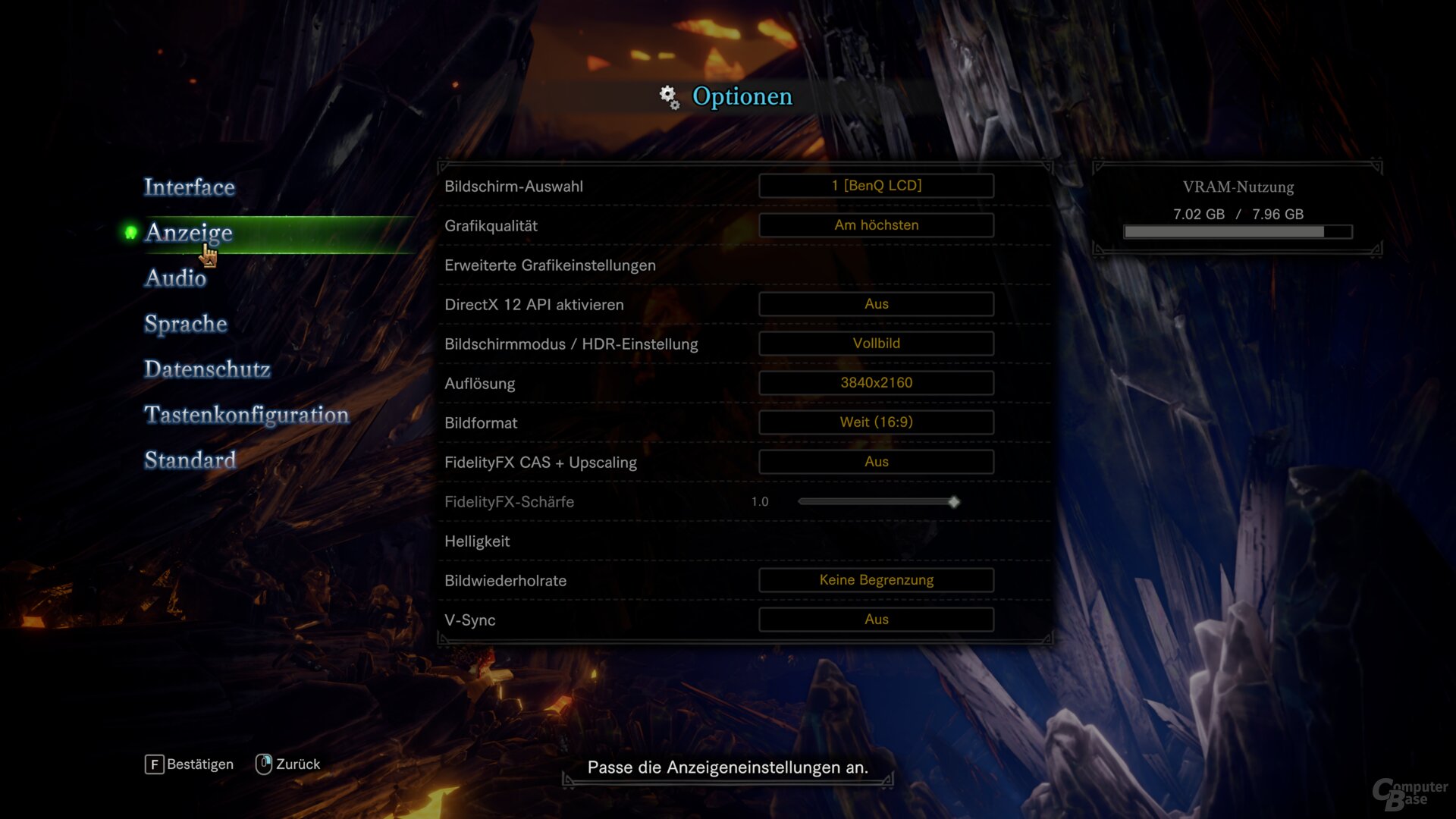
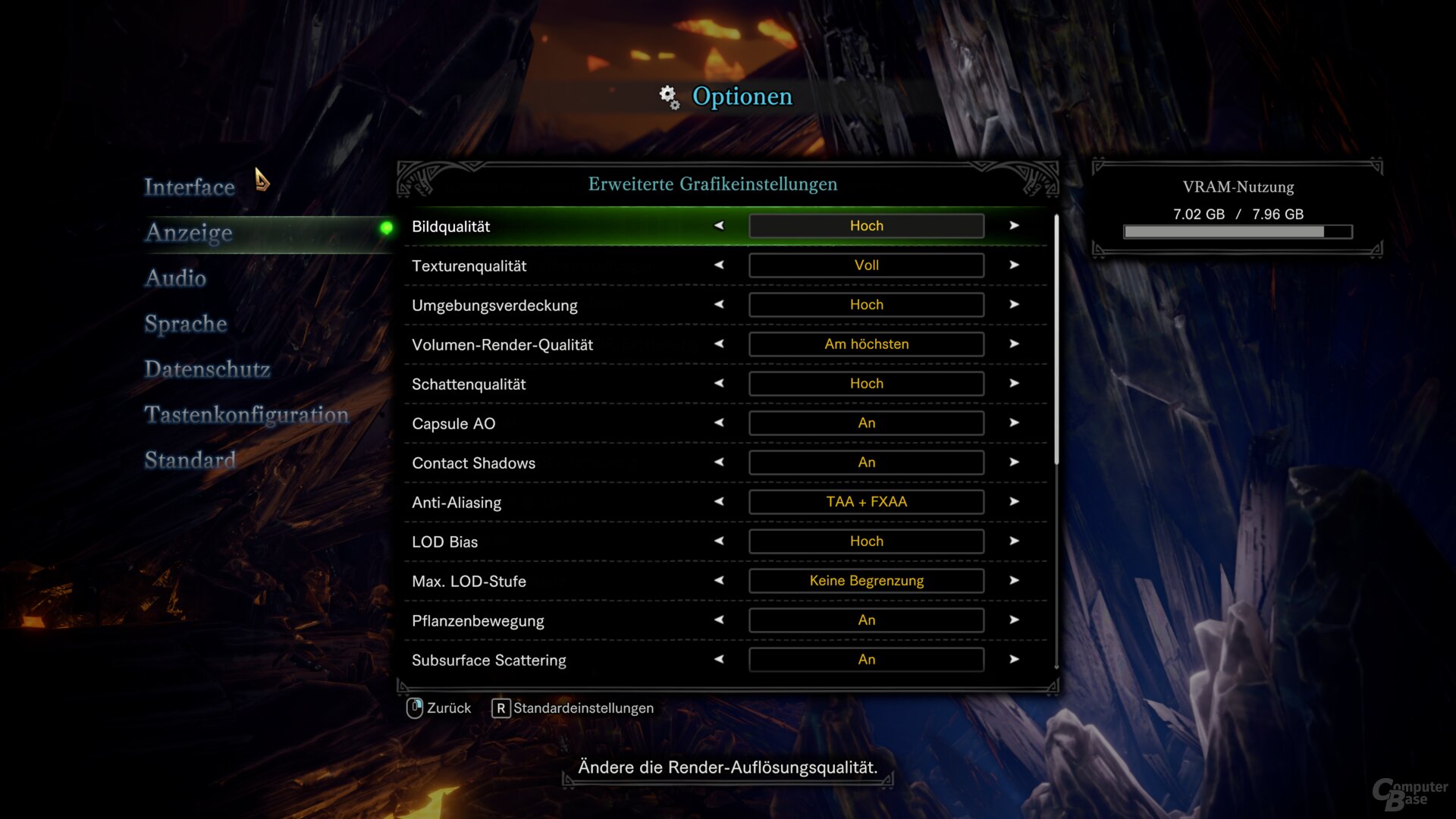
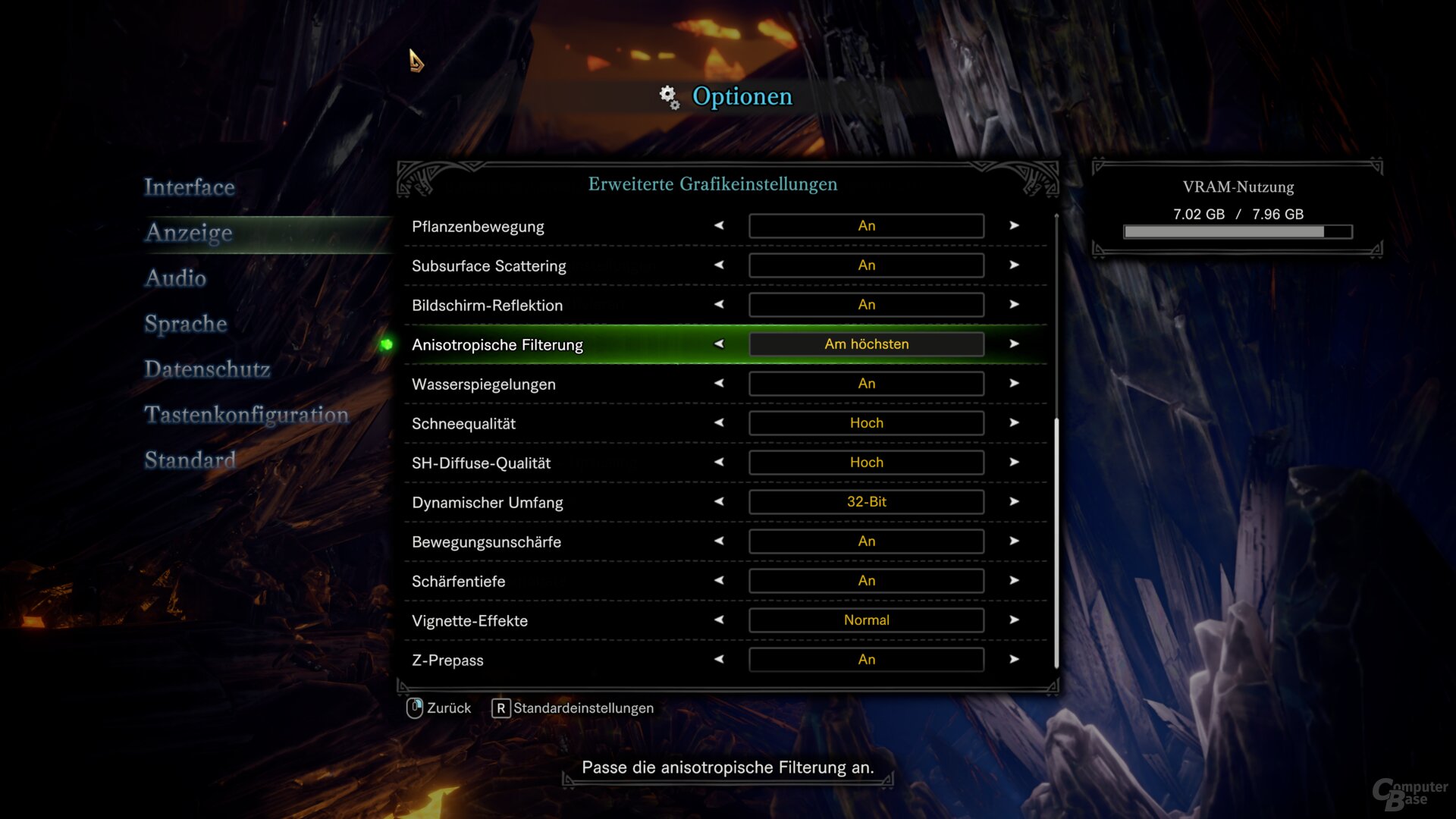
Unlike in previous games, Capcom does not use the AMD filter as a pure resharpening function, but combines the focus filter with upsampling. If the option is activated, the game automatically renders in a lower resolution and tries to compensate for the blurring. FidelityFX increases the frame rate in Monster Hunter World: Iceborne, but the image quality suffers. The game makes it possible to adjust the sharpness according to your own wishes regarding the intensity, so that you can find a successful compromise between image sharpness and image quietness.
FidelityFX can be activated on AMD and Nvidia graphics cards. The still integrated DLSS, on the other hand, is not available to Nvidia or GeForce RTX accelerators. The effect of DLSS is identical to that of FidelityFX. The game then renders in a lower resolution for higher performance and an AI algorithm is used to try to restore the lost information. DLSS and FidelityFX cannot be used at the same time.
For a better picture: manual resharpening of AMD or Nvidia
What the game does not provide can also be achieved manually with an AMD or an Nvidia graphics card. In low resolutions like Full HD, Monster Hunter World uses TAA anti-aliasing to blur the image quite intensely. And this can be almost completely removed using Radeon Image Sharpening or the GeForce counterpart without the image having to deal with other major problems.
If you play in 1,920 × 1,080, you should definitely try the resharpening function in the graphics driver. The image quality improves significantly, but the performance costs are only minimal. AMD's and Nvidia's approaches are not identical, but very similar. If both techniques are set for a sharpening of 50 percent, Nvidia's variant sharpens a little more. For some, this will be too much image sharpness, a lower value can be helpful here.
It should be noted that TAA anti-aliasing produces slight graphic errors in places at standstill. These are much more noticeable after sharpening than without, so this disadvantage has to be accepted.
When comparing screenshots and videos, it should be noted that the lighting is slightly different, but this has no effect on the sharpness effect. The screenshots should also be viewed in full screen mode. It is recommended to download the video so that the aggressive YouTube compression has no influence.
On the next page: DirectX 11 vs. DirectX 12 as well as GPU and CPU benchmarks





